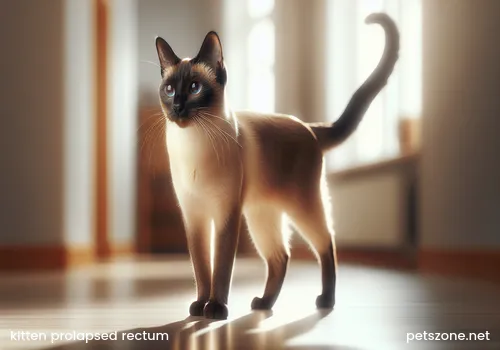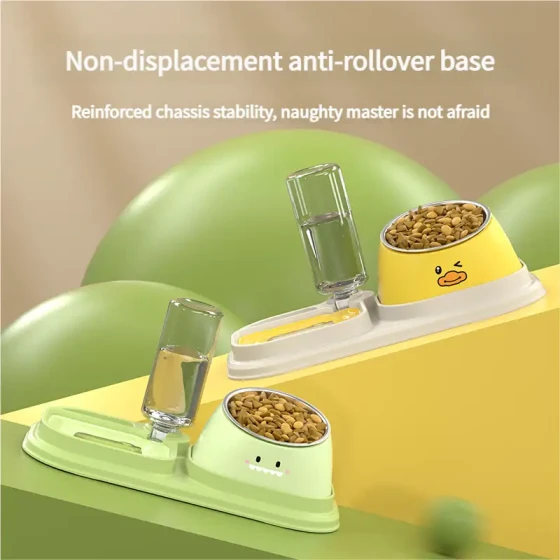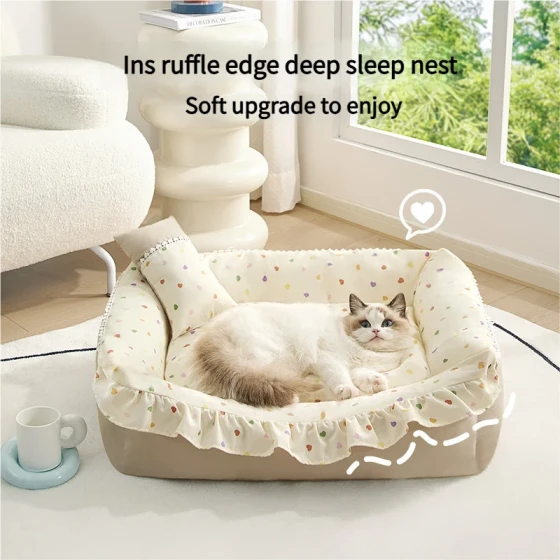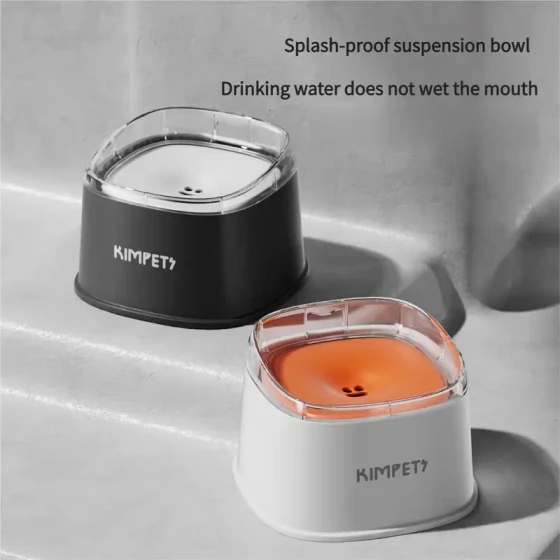How Many Days Can a Kitten with Prolapsed Rectum Live_Lifespan and Treatment Methods of Kittens with Prolapsed Rectum
If a kitten’s prolapsed rectum is not treated promptly by a professional veterinarian, the survival time is usually very limited, possibly only a few days or even less. Successful treatment is the key factor in determining whether the kitten can survive and for how long.
What is a Kitten’s Prolapsed Rectum?

A kitten’s prolapsed rectum might sound a bit scary. Simply put, it means the kitten’s rectum or part of the colon has slipped out of the anus and is exposed outside. It’s like the body's “pipe” end has appeared where it shouldn’t. This is not a trivial matter, as it causes the kitten severe pain and, if not treated promptly, can lead to a series of serious health problems.
Why Do Kittens Get Rectal Prolapse? Key Causes Revealed
Rectal prolapse in kittens does not happen without reason; there are usually several “drivers” behind it. Understanding these causes helps us better prevent and manage the condition:
- Severe Diarrhea or Constipation: This is one of the most common causes. Imagine a kitten having diarrhea non-stop, or straining hard to defecate due to constipation, requiring prolonged and repeated exertion. This continuous abdominal pressure can “push” the rectum out.
- Parasitic Infections: Intestinal parasites irritate the kitten’s intestines, causing diarrhea or frequent defecation, thereby increasing the risk of prolapse. It’s like having unwanted “guests” in the intestines, forcing the kitten to strain to expel them.
- Urinary System Diseases: Issues like cystitis or urethral obstruction cause the kitten to strain during urination, and this continued abdominal pressure can also lead to prolapse.
- Straining During Labor: Although kittens themselves don’t experience this, in mother cats, labor can be one possible cause of prolapse.
- Other Causes: Spinal cord diseases, trauma, or tumors near the rectum or anus can affect the nerves or muscles controlling defecation, increasing the likelihood of prolapse.
How to Detect Rectal Prolapse in Kittens? Watch Out for These Signs
Signs of rectal prolapse in kittens are usually quite obvious, so pet owners should observe carefully:
- Seeing Something Protruding from the Anus: The most direct sign is seeing a segment of red, tubular tissue exposed at the anus. It may be small at first but can lengthen over time.
- Licking the Anus Area: The kitten will frequently lick or rub the anus due to discomfort.
- Difficulty or Pain During Defecation: The prolapsed tissue obstructs normal defecation or causes the kitten intense pain when defecating.
- Lethargy and Loss of Appetite: Pain and discomfort worsen the kitten’s spirit and reduce its desire to eat.
Why Is It Urgent? The Dangers of Rectal Prolapse
Once rectal prolapse is discovered in a kitten, don’t hesitate or wait; take it to a veterinarian immediately. This is because:
- Tissue Necrosis: The exposed rectal tissue can swell, turn purple, and even necrotize due to poor blood circulation. Necrotic tissue can cause severe infection.
- Infection: The prolapsed rectum exposed outside is easily contaminated by bacteria, leading to local or systemic infections.
- Persistent Pain and Discomfort: This causes great suffering to the kitten and further weakens its constitution.
- Affecting Defecation and Appetite: Without correction, the kitten cannot defecate or eat normally, quickly becoming weak.
In short, rectal prolapse is a “time bomb” for kittens — the longer it lasts, the greater the danger.
What to Do About Kitten Rectal Prolapse? Treatment Secrets Revealed
Veterinarians will adopt different treatment methods based on the kitten’s specific condition:
- Manual Reduction: If the prolapse is recent and the tissue is not severely swollen or damaged, the vet may attempt to gently push the prolapsed rectum back in place. This is usually done under sedation or anesthesia. After reduction, the vet may perform a "purse-string suture" around the anus to temporarily narrow the opening and prevent recurrence. This suture is usually removed after a few days.
- Surgical Treatment: If the prolapse duration is longer, the tissue is severely edematous, damaged, or necrotic, or the prolapse recurs after manual reduction, surgery is necessary. Surgical methods include:
- Rectal Fixation Surgery: Fixing the rectum to the abdominal wall to prevent it from prolapsing again.
- Removal of Necrotic Tissue: If the prolapsed tissue is necrotic, surgery removes the dead portion, then the healthy bowel ends are sutured together.
Whether manual or surgical, post-treatment requires close observation and care, including controlling underlying causes (such as diarrhea or parasites) and using anti-inflammatory and pain-relief medications.
How Long Can a Kitten with Prolapsed Rectum Live? The Key is “Treatment or No Treatment”
As mentioned at the beginning, there is no fixed answer to “how many days can a kitten with prolapsed rectum live.” It entirely depends on whether and when the kitten receives professional medical care and whether the underlying causes can be effectively controlled.
- No Treatment: If the prolapse is noticed but the kitten is not taken to a vet, it will likely rapidly deteriorate due to pain, infection, tissue necrosis, and inability to defecate or eat normally, usually surviving only a few days or even one or two days. The prolapsed tissue will worsen, and the pain will increase.
- Timely Treatment: If the kitten receives veterinary care at the first sign or before the tissue is seriously damaged (manual reduction or surgery), and if the underlying cause of the prolapse is found and controlled, the kitten’s survival rate greatly increases, potentially allowing a full recovery to live a normal life.
Therefore, “how many days” is less about time and more about whether help is received. The more timely and appropriate the treatment and care, the higher the chances of survival.
How to Prevent Kitten Rectal Prolapse? Start from the Source
The most important prevention is to pay attention to digestive health and promptly treat underlying diseases:
- Regular Deworming: Follow veterinarian advice to deworm kittens regularly, preventing parasite-induced diarrhea and prolapse.
- Manage Diet Well: Ensure kittens receive high-quality, easily digestible food, avoiding foods that may cause diarrhea or constipation.
- Promptly Treat Diarrhea and Constipation: At signs of diarrhea or constipation, consult a vet immediately to identify and treat the cause without delay.
- Monitor Other Health Issues: Treat urinary or other diseases causing abdominal pressure promptly.
Frequently Asked Questions
- Q: Can I treat my kitten’s prolapsed rectum at home?
- A: It is not recommended to treat it yourself. Although some information may mention simple cleaning or attempting reduction, this carries high risk. You may misjudge the condition, cause further injury, and lack sterile conditions, increasing infection risk. The safest and most responsible action is to seek professional veterinary help immediately.
- Q: Will the prolapse recur after manual reduction?
- A: It is possible. Manual reduction is only a temporary measure. If the underlying causes are unresolved or rectal fixation is poor, prolapse may recur. This is why vets usually apply purse-string sutures or recommend further examination and treatment of root causes.
- Q: Is prolapse surgery risky?
- A: All surgeries carry some risk, but in severe or recurrent cases, surgery may be the only curative option. Risks depend on the kitten’s overall health, prolapse severity, and surgical method used. Vets will assess risks before surgery and discuss them with you.
Summary
Kitten rectal prolapse is a health emergency. It causes immense pain and, if untreated, often results in death. The key to how long a kitten can live after prolapse is not how long the prolapse has existed, but whether the kitten is taken immediately to hospital for professional diagnosis and treatment. With veterinary help, most kittens with prolapse can recover. As owners, we must stay vigilant, detect issues early, and seek professional medical support promptly to give kittens a chance at life. At the same time, paying attention to daily health and preventing problems from the source is the best care for them.



-560x560.webp)